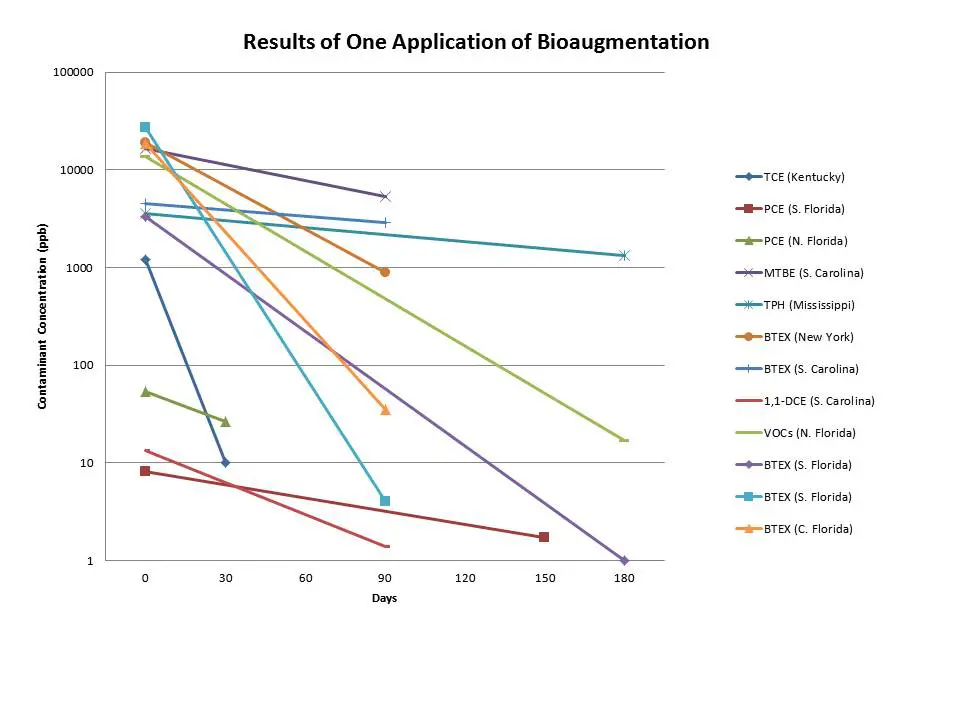Demonstration of Dry Cleaner PCE Bioremediation in Vermont
Cl-Out bioremediation at a dry cleaner in Vermont demonstrated bioremediation of PCE in aerobic ground water. CL-Out microbes were selected for bioremediation of the site because they are compatible with the natural aerobic aquifer conditions. One application of CL-Out bioaugmentation reduced the PCE concentration by 90% in less than 6 months without increasing the vinyl chloride concentrations.
Sampling Results
The pre-bioaugmentation sampling showed aerobic conditions (DO 1.2 mg/L and ORP 108) and a low population of Pseudomonas microbes (2,000 cells/ml). After bioaugmentation the Pseudomonas population was greater than 300,000 cells/ml. As the microbes consumed the dextrose substrate and produced the oxygenase enzymes necessary for PCE destruction, the ORP and PCE concentrations decreased to -236 and 0.89 mg/L, respectively. Six months after the bioaugmentation, the microbial population returned to the pre-bioaugmentation conditions (5,000cells/ml).
The bioaugmentation reduced the PCE concentration from 219 ug/L to 22.3 ug/L.


